-
Posts
294 -
Joined
-
Last visited
Contact Methods
-
Website URL
http://rocknrholsters.com
Profile Information
-
Gender
Male
-
Location
La Center, WA.
-
Interests
Leather, restoring Cavalry Antiques, horses, shooting
LW Info
-
Leatherwork Specialty
saddles
-
Interested in learning about
leather
-
How did you find leatherworker.net?
internet
Recent Profile Visitors
15,933 profile views
Treed's Achievements

Member (2/4)
-
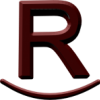
Second Christmas Order
Treed replied to Treed's topic in Gun Holsters, Rifle Slings and Knife Sheathes
This pistol doesn't have the high profile suppressor sights but this style allows more room for the sight channel on ones that do. Wrap around to the rear gives more room for the larger flashlight. It is a big with all the accessories but it is what the customer has and wanted something to carry it in. -
Holster for a glock 17 size P80 with Holosun red dot, O-light Pro-Valkyrie light. Holster is 8oz Herman Oak with 2 oz lining, thumb break and Tandy background stamp for texture
-
Order for Christmas... P80 glock 19 with Holosun red dot, o-light mini light, holster 9-10 Herman Oak unlined... Tandy background stamp for texture
-

Creasing vs stitch grooving
Treed replied to Scootch's topic in Gun Holsters, Rifle Slings and Knife Sheathes
Its another one of those things that I look back on history for answers. In doing a lot of repairs on military equipment from late 1800's to 1940's. All of the pieces are stitched with stitching groves, most are made of leather at 6 to 7 oz. Most of the equipment is cavalry saddles, and other tack. The stitching was done with linen thread, used hard and survived. In fact most of the stitches are welded into the leather and cause great difficulty when you go to replace them. It may be an added step in the sewing process but it worked so i add it to my process. Bobby -
No rodeos, no shows, no where to go except the shop. Time to do some experimenting and practice. Both purses are of Herman Oak 10 oz with 4 oz oil tanned chap leather gussets. Neatsfoot oil and fiebing's antique paste and Tan Kote final finish. The roses are done from a pattern by Steve Yezek of Lazy Y leather. He has some great pattern packs.
-
swivel knife would be the fastest and most accurate.....
-
practice, practice, practice and more practice..... check out youtube channel Joe Meling or facebook 23+ for some tips and tricks..... bobby
-
This is the first in a 5 part video in tooling this indian chief drawn and tooled by Joe Meling from Pendleton Oregon.... The series can be seen on u tube at Joe Meling or on facebook at 23+.....Joe is an outstanding artist and leather instructor Bobby
-
Who made the pebble tools that you are using and the pebble beveler? They look like they are steel and make a very crisp impression. Great job and love the other videos also.
- 7 replies
-
- grim reaper
- skull
- (and 11 more)
-
I will try to describe what I would do with this pattern. Tandy sells a book and it is probably free in digital on there web site called inverted carving. Draw out the pattern and them make your knife cuts along the lines at the width that you want. Instead of beveling down the out side of the line, bevel to the inside towards the center of area. After the beveling is done go back with a small backgrounding tool and background between the lines. You can make a line any width that you want.
-
Yes..... I think that forgoing the background tool and just painting would have made the piece pop more.
-
the use of the background tool is to drop these areas to give you dimension and show off the tooling. When dropping this area it is suppose to collect the antique that is used. When painting this area leave it and use the paint to give you dimension and show off the tooling. Belt makers have been using this technique of painting backgrounds for years. Picture is from a good friend of mine a belt maker Joe Meling of 23+. Joe has great patterns and videos on leather working on his face book page 23+. Bobby
-
Question...... the areas around the tooling are you actually backgrounding this area or are you leaving it untouched until you are painting it. When painting the area we call background I don't touch it with any tools and let the paint color make the distinction between tooled and not. This allows me to remove any antique from the surface of the paint. Bobby
-

Couple tooled belts
Treed replied to Rolandranch's topic in Purses, Wallets, Belts and Miscellaneous Pocket Items
You don't want the fold to be a double thickness. The trick is to skive the leather down on the tooled piece just past the fold before you glue the liner down. This way you can run the liner the full length and reduce it at the fold. Depending on the weight of the liner some skive it also so that when done the leather is a uniform thickness all the way down the belt.- 10 replies
-
depends on the customer and what I think he can do for me. I don't have a large advertising or marketing budget because word of mouth has really built my business. So a discount if the customer that has a large number of guns is no problem. My product sells its self and if he is willing to buy more than one it is worth the small fee for advertising.




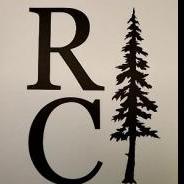


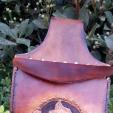
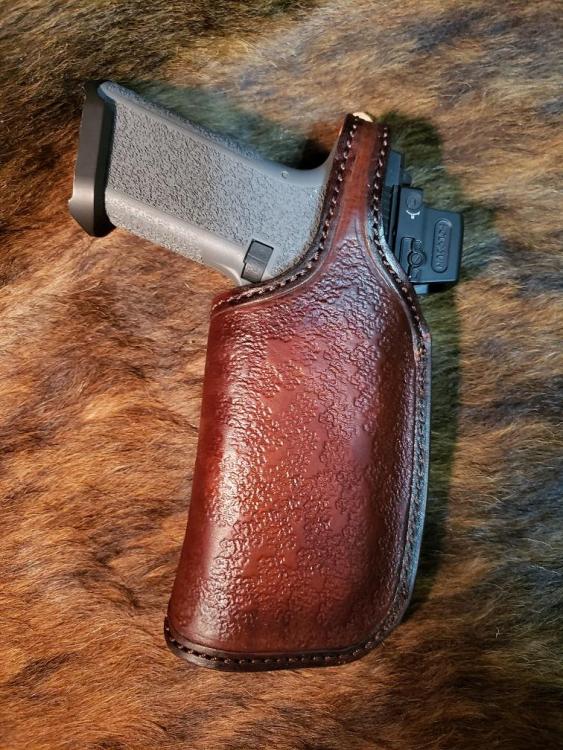
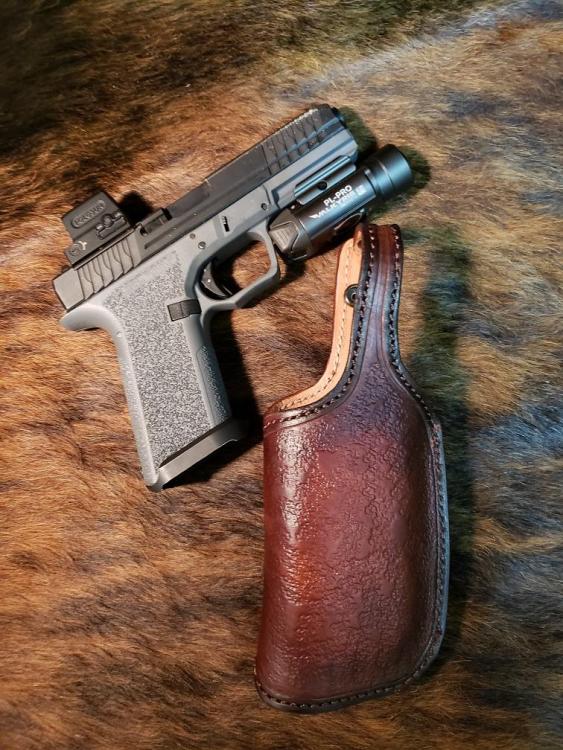
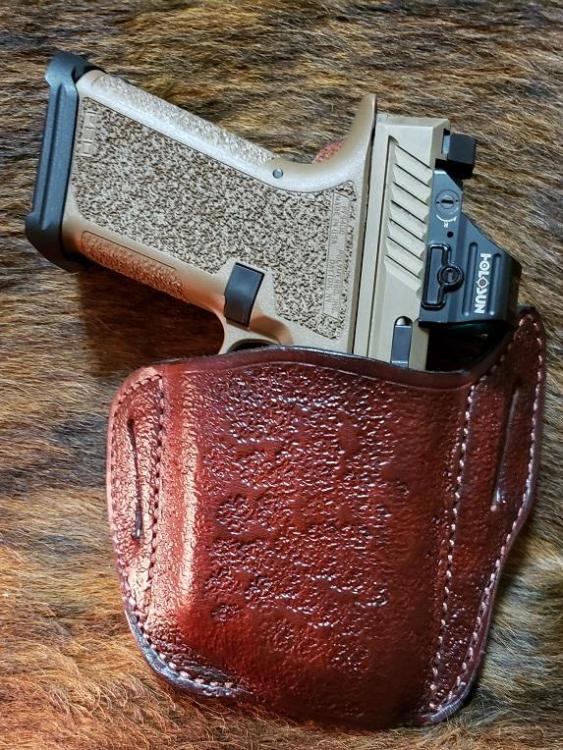
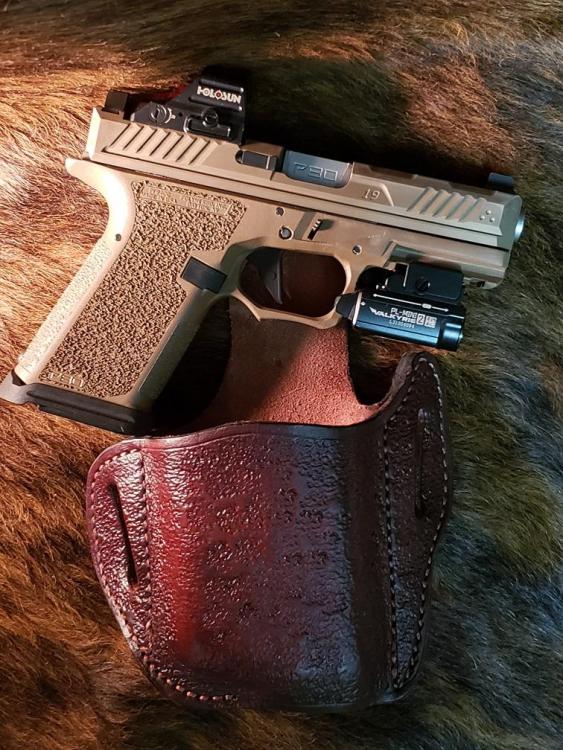
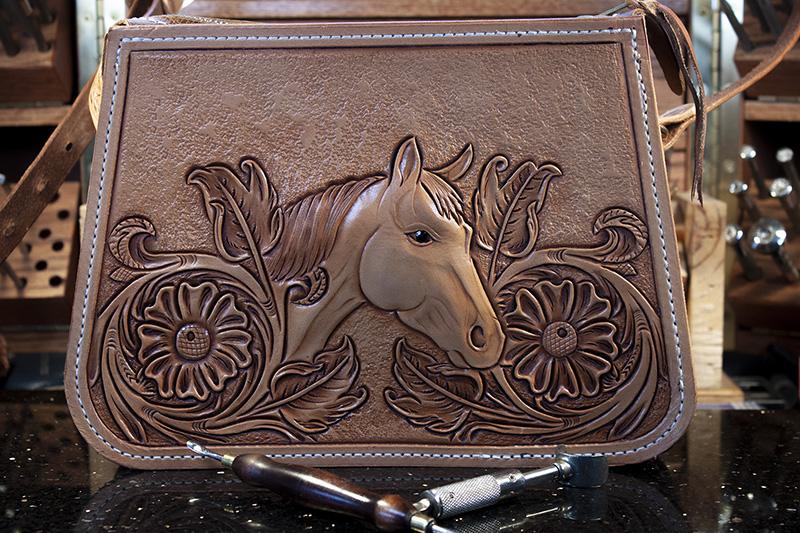


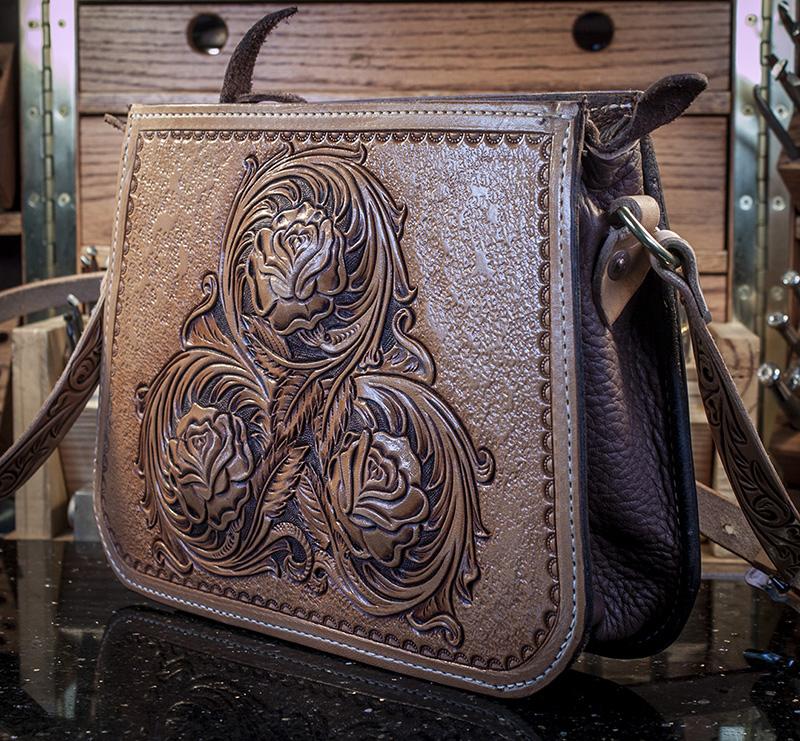
.png.0c2c01ab3cd43a2af84db3e32599c36b.png)